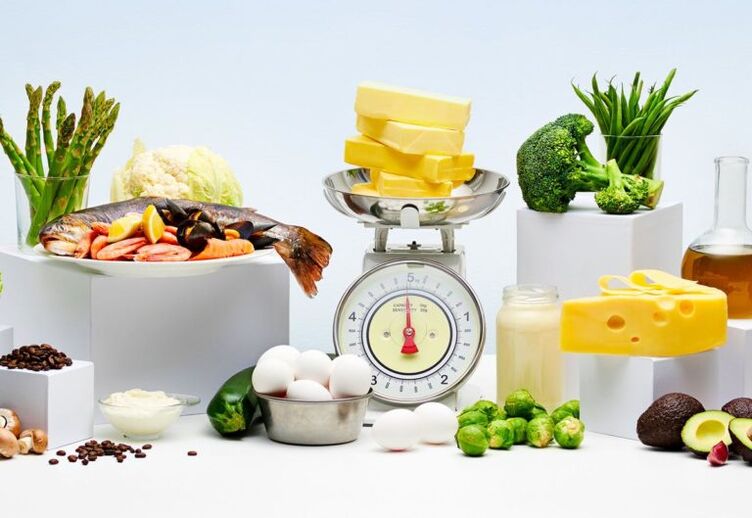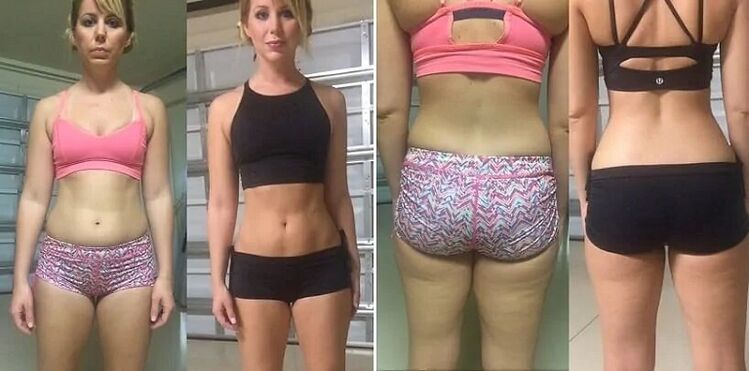The keto or ketogenic diet is a diet based on a low-carbohydrate diet by increasing protein and fatty foods in the diet. The keto diet got its name from the process that occurs in the body with such a diet - ketosis.
What is ketosis?
Ketosis is a state of the body when cells, as a result of carbohydrate starvation, begin to break down fat for energy, and a large number of ketone bodies are formed. This process appeared as a result of evolution and allowed our ancestors to survive in the absence of carbohydrates in their diet.
The essence of the keto diet
It consists in the fact that you completely remove from the diet food that contains carbohydrates. This is not only bread, sweets and alcohol, but also any cereals and starchy vegetables. At the same time, you increase the amount of protein and fatty foods.

Effectiveness of the keto diet for weight loss
The keto diet has been shown to be effective in many studies and is very popular. It became popular due to its high efficiency in the fight against body fat. On average, you can lose 0. 5 to 3 kg per week, depending on how much excess fat you have initially. Such rapid weight loss was made possible by the fact that the body is rebuilding to obtain energy from fats and in conditions of a calorie deficit in the diet, begins to expend your reserves of subcutaneous fat.

Basic principles and rules of the keto diet
In order for the ketone diet to bring not only results, but also benefits, it is worth adhering to the following principles:
- eat foods that do not contain carbohydrates, the only exception will be vegetables, but not starchy ones;
- drink at least 2 liters of water for girls and 3-4 liters for men. If you don't drink enough water, you may experience bad breath and urine odor;
- fiber must be present in the diet. The optimal amount is 30 grams, it can be added to salads or scrambled eggs. Fiber is essential for the proper functioning of the digestive system. (to avoid constipation);
- to make the process of losing weight faster, add exercise. 20-30 minutes initially will be sufficient.
Ketosis or how to properly start a keto diet
To start a ketone diet, you need to:
- reduce carbohydrate intake to 40-50 grams per day. You should get your carbohydrates mainly from vegetables;
- the amount of protein in the body should be 1-1. 5 grams for girls and 2-2. 5 grams for men;
- eat enough fat.
Ketosis will not start right away, but about 3-5 days, everything is individual here. At first, you will feel weak, the first 1-2 days, a condition similar to a cold. Do not worry, this is how the body reacts to the lack of carbohydrates in the diet, there is nothing you can do about it, you just need to wait. Once the ketosis process kicks in, you will feel much better, some people on the ketone diet feel even better than they did before. There is a surge of energy and a decrease in hunger between meals.
How to understand when ketosis has started
To determine if you are in ketosis or not, you can purchase test strips at your pharmacy. They are optional, you can use them more for the sake of interest, in order to understand that the process is going on.
Benefits of the keto diet
- rapid weight loss;
- reducing the annoying feeling of hunger;
- improved mood;
- normalization of blood pressure and blood sugar levels;
- improving the quality of sleep;
- quick and clear mind.
Types of the keto diet
There are three types of ketone diets:
- classic- with this scheme, you consume a small amount of carbohydrates every day. Many people prefer this option as it allows you to consume a small amount of fruit every day.
- target- you take in a small amount of carbohydrates in the evening before the day when you have a planned workout, it will give you a burst of energy.
- rotary or cyclic- once a week you set aside an 8-10 hour window in which you eat whatever you want. It should be predominantly carbohydrate food in order to replenish glycogen stores and prevent a slowdown in metabolism.






























